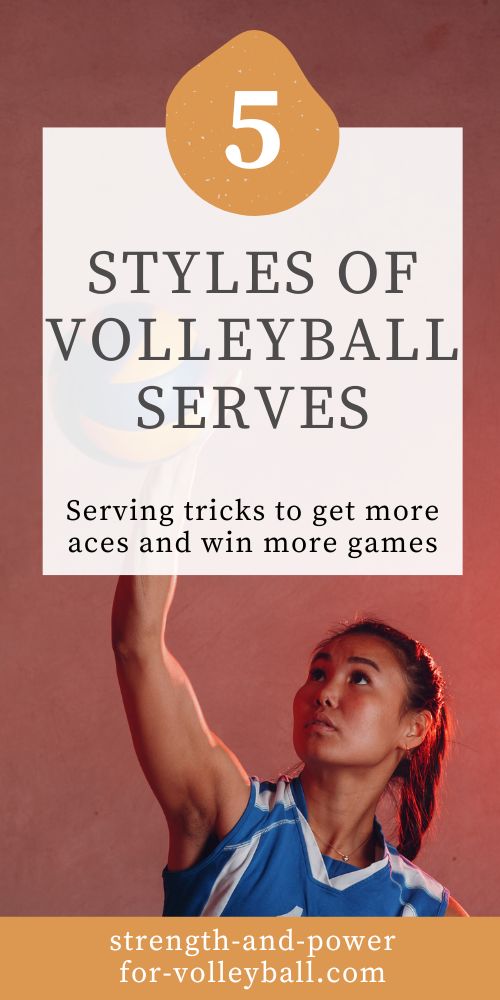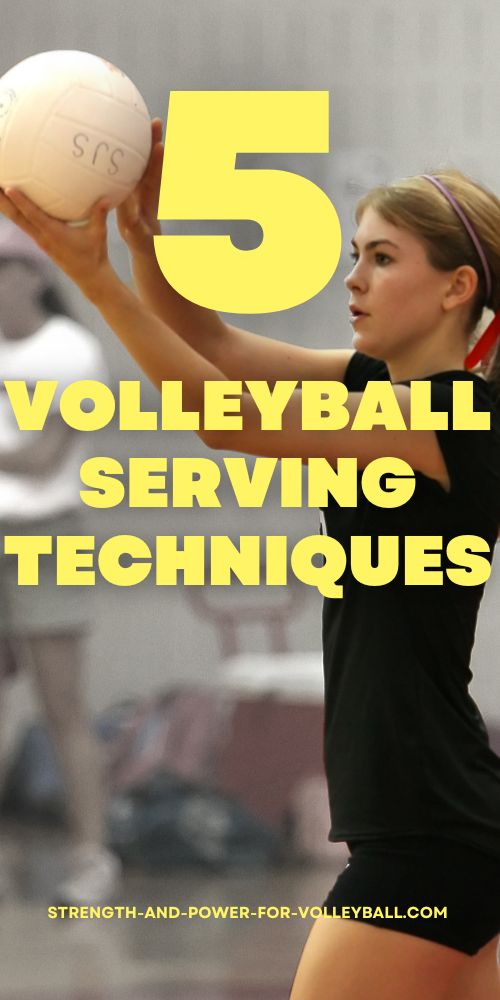Volleyball Serving Techniques
5 Types of Volleyball Serves
Volleyball serving techniques are important for becoming a successful volleyball player.
There are many different serving styles in volleyball. Learn these 5 serving techniques to take your serving ability to a higher level.
Float Serve - Volleyball Serving Techniques
The purpose of the float serve is to make it difficult for the opponent to pass by serving the ball in a way that makes the ball float in the air resulting in the passer having a difficult time getting into the correct position to pass.
The key to hitting a good floater is to contact the ball in such a way that the ball doesn't spin. If the ball spins, the ball will cut through the air in such a way that makes the ball easier for the receiver to track.
So, you want to contact the ball in a way that creates as little spin as possible.
You do this by making contact through the center of the ball.
If you miss the center, the ball will spin.
Practice this technique to get a feel of what it's like to contact the ball correctly. When the ball doesn't spin, recognize how you made contact so you can repeat the contact again.
Topspin Serve - Volleyball Serving Techniques
Topspin serving is serving the ball in such a way that makes the ball spin downward into the court. The topspin serve is a controlled serve that helps the server place the ball into the court with more accuracy.
The advantage of the topspin serve is that if the receiver isn't used to seeing topspin, it will be difficult to receive. This is because the path of the ball is different than the float serve in that the ball will drop faster.
The disadvantage of the topspin serve is that the ball can actually be easier to pass because the flight of the ball is more predictable. When an experienced receiver is comfortable passing the topspin serve, the receiver will have an easier time getting in position to make a successful pass.
Jump Serve - Volleyball Serving Techniques
The jump serve is a type of serve that has many advantages and disadvantages.
The advantage of the jump serve is that when executed correctly, the ball can be much harder to pass because the receiver has less time to react to get in position to pass.
The disadvantage of the jump serve is that it can be more difficult to execute correctly because of the timing of the hit.
There are different types of jump serves. The jump topspin serve is a tough serve that quickly gets over the net to the opponent. The ball get's to the receiver fast and the ball also drops quickly. However, it takes a lot of practice to become good at the topspin jump serve. This is why you'll see a lot of missed topspin jump serves.
The jump float serve is another type of jump serve. This serve can be more difficult to pass than a regular float serve because the receiver has less time to get in position to pass. The jump float serve can also be executed at different angles which makes passing more difficult. Learning to jump float is more difficult because of the timing the hit.
However, once a server becomes comfortable executing the jump serve, it's actually easier to be consistent getting the serve into the court than any other type of serve.
Spot Serving - Volleyball Serving Techniques
Spot serving or zone serving is where you focus on serving to different zones of the court.
This is similar to the float serve, but a little different. The difference between spot serving and float serving is that with zone serving, you aren't concerned about the ball floating.
For spot serving, you're just focused on where you place the ball into the court.
To be successful at spot serving, you need to be aware of how you are contacting the ball.
For example to serve the ball short, you need to contact the ball more under the ball or at least don't serve the ball with as much power. If you hit the ball so it goes more upward, you can then drop it short over the net.
To serve the ball to the left side of the court, contact the ball more to the right. To serve more to the right side, contact the ball more on the left.
Practice serving to different spots on the court to get better at placing the ball into the court.
Skyball Serve - Volleyball Serving Techniques
The skyball serve is a beach volleyball serve. This is when you contact the ball underhand and send the ball really high into the sky.
This serve is difficult to pass because the receiver doesn't see this kind of serve very often. It's a really tough serve because the ball is coming down from the sky at a different angle then what receivers are used to seeing. It's tough to the read the ball and get in position to pass.
However, since the technique of serving a skyball is really difficult to master, most servers haven't developed the skyball, so it's not part of their serving repertoire.
How to Execute the Skyball Serve
You basically perform the sky ball by tossing the ball in such a way that it has a lot of topspin. You then make a very fast underhand hitting motion to contact the ball on the underside.
You must contact the ball more on the back part of the ball. This will help it continue to have topspin as it cuts through the air. This is the key to the serving the skyball into the court. You need to create topspin so the ball cuts straight through the air so the ball travels in a straight line, the direct you want it to go.
If you enjoyed these volleyball serving techniques and would like to keep it close to you at any time, just save this pin to your Pinterest Volleyball Training Board.

